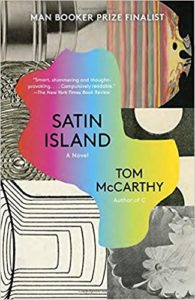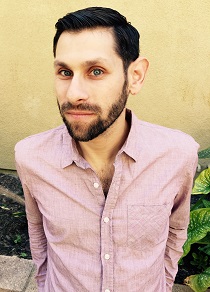Contemporary, Inc.
by Theodore Martin
The essay begins:
It is, in one way at least, a good time to be contemporary. In the past ten or so years, the study of contemporary literature and culture has amassed an impressive sum of institutional currency, paid in the usual forms of new professional organizations, journals, conferences, book series, and—such as they are—job searches. So too has the philosophical idea of the contemporary only recently “begun to emerge into the critical daylight,” as the philosopher Peter Osborne points out, bringing with it a “recent rush of writing trying to make some minimal theoretical sense of the concept.” Yet perhaps the most unmistakable sign of the contemporary’s ascendance as a scholarly category is that it has now become a subject for the contemporary novel.
 This is not so surprising. Indeed, one of the first things to notice about the range of Anglo-American writers who, through channels of legitimation ranging from classroom syllabi to academic journals to crossover magazines, have become exemplars of the quality that English professors vaguely but confidently call “contemporary”—writers like Teju Cole, Maggie Nelson, Ben Lerner, and Tom McCarthy—is that they are all intensely aware of literature’s intimate relationship to academic work. McCarthy, one of the most frequently taught and talked about English-language writers of the twenty-first century, offers an especially illuminating case study in the current entwining of contemporary literature and contemporary criticism. As both a Man Booker Prize-nominated novelist (for 2010’s C. and 2015’s Satin Island) and a published literary theorist (2006’s Tintin and the Secret of Literature), McCarthy is not only a ubiquitous topic of conversations at literature conferences; he has also become, in recent years, a speaker at those same conferences, giving keynote addresses at the Louisville Conference on Literature and Culture in 2012 and at the Society for Novel Studies in 2016. If McCarthy’s public career reveals the increasingly permeable boundary between writers and critics in the contemporary moment, his novels narrate the consequences of this new professional permeability. In McCarthy’s hands, the contemporary novel has become an opportunity to reflect on the academic category of the contemporary itself. Halfway through McCarthy’s most recent novel, Satin Island, the narrator, a former academic turned “corporate anthropologist” named U., travels to Frankfurt for a conference. “The theme of the conference,” we are told, “was—for once!—not The Future. It was The Contemporary.” For U., this trending topic is
This is not so surprising. Indeed, one of the first things to notice about the range of Anglo-American writers who, through channels of legitimation ranging from classroom syllabi to academic journals to crossover magazines, have become exemplars of the quality that English professors vaguely but confidently call “contemporary”—writers like Teju Cole, Maggie Nelson, Ben Lerner, and Tom McCarthy—is that they are all intensely aware of literature’s intimate relationship to academic work. McCarthy, one of the most frequently taught and talked about English-language writers of the twenty-first century, offers an especially illuminating case study in the current entwining of contemporary literature and contemporary criticism. As both a Man Booker Prize-nominated novelist (for 2010’s C. and 2015’s Satin Island) and a published literary theorist (2006’s Tintin and the Secret of Literature), McCarthy is not only a ubiquitous topic of conversations at literature conferences; he has also become, in recent years, a speaker at those same conferences, giving keynote addresses at the Louisville Conference on Literature and Culture in 2012 and at the Society for Novel Studies in 2016. If McCarthy’s public career reveals the increasingly permeable boundary between writers and critics in the contemporary moment, his novels narrate the consequences of this new professional permeability. In McCarthy’s hands, the contemporary novel has become an opportunity to reflect on the academic category of the contemporary itself. Halfway through McCarthy’s most recent novel, Satin Island, the narrator, a former academic turned “corporate anthropologist” named U., travels to Frankfurt for a conference. “The theme of the conference,” we are told, “was—for once!—not The Future. It was The Contemporary.” For U., this trending topic is
even worse. It was, of course, a topic to which I’d been giving much thought: radiant now-ness, Present-Tense AnthropologyTM and so forth. But I wasn’t ready to give all that stuff, all those half-formed notions, an outing. Besides which, I’d started to harbour doubts about their viability. These doubts themselves, I told myself in the days before the conference, were what I’d air. To air the doubt about a concept before airing the concept itself was, I thought, quite intellectually adventurous; it might go down well.
To think about the contemporary, McCarthy suggests, is to think mainly in “half-formed notions.” That is because, as U. realizes, the contemporary is an essentially empty category: its uncertainty precedes its content. Imprecise and unformed, the contemporary brooks no positive definition; it can be expressed only in terms of one’s “doubts” about its “viability” or existence.
U.’s conference presentation is, to that end, all doubt and little notion. “The Contemporary,” U. tells his audience, is “a suspect term.” It is not a stable historical period so much as “a constantly mutating space,” less a fixed moment than “a moving ratio of modernity.” The constant movement and mutation of the contemporary means that it is “misguided” to make “periodic claims” about it, since such periodizing claims “can’t be empirically justified” (100). The absence of any empirical or historical grounds for talking about the contemporary means that the term is, at best, only a placeholder for future inquiry. As U. puts it in the last lines of his talk, “What we require is not contemporary anthropology but an anthropology of The Contemporary.” If U. is not entirely sure what he means by this (“Ba-boom: that was my ‘out,’” he admits cynically), neither is his audience; his talk is, we are told, “met with silence” (101).
Yet that silence may have a familiar ring to it. While U.’s lecture may fail to engage its intended fictional audience, it should still capture the attention of many members of its nonfictional audience, for whom it will evoke, with impressive precision, the recognizable language and familiarly awkward experience of the academic conference. In short, these pages of Satin Island are as much a staging of literary criticism as they are literature. As such, they are our first hint of a novel—and, as I’ll argue over the course of this essay, of a moment in the history of the novel—that strives to be not only a novel but also a commentary on the disciplinary frameworks that, in the Anglo-American academy, determine how something becomes a “contemporary” novel in the first place.
Why does Satin Island consider the contemporary such a suspect term? Continue reading …
In this essay Martin traces the century-long history of contemporary literature as a field of study in English departments. Showing how prior debates about the scholarly status of contemporary literature coincided with both changing disciplinary methodologies and the changing political landscape of the university, he argues that prevailing anxieties about the study of the contemporary today are central to explaining the emergence of a new kind of contemporary novel.
 THEODORE MARTIN is Assistant Professor of English at the University of California, Irvine. He is the author of Contemporary Drift: Genre, Historicism, and the Problem of the Present (Columbia UP, 2017).
THEODORE MARTIN is Assistant Professor of English at the University of California, Irvine. He is the author of Contemporary Drift: Genre, Historicism, and the Problem of the Present (Columbia UP, 2017).
